Baxter State Park
- January 23, 2024
- 1 comment
Explore Baxter State Park, Maine’s wilderness gem with majestic Mt. Katahdin, diverse wildlife, and thrilling outdoor adventures. Located in the remote wilderness of Maine, Baxter State Park is a breathtaking expanse of natural beauty and tranquility. Established through the vision of former Governor Percival Baxter, this 200,000-acre park is a testament to unspoiled nature, featuring the majestic Mount Katahdin, Maine’s highest peak, as its crown jewel.
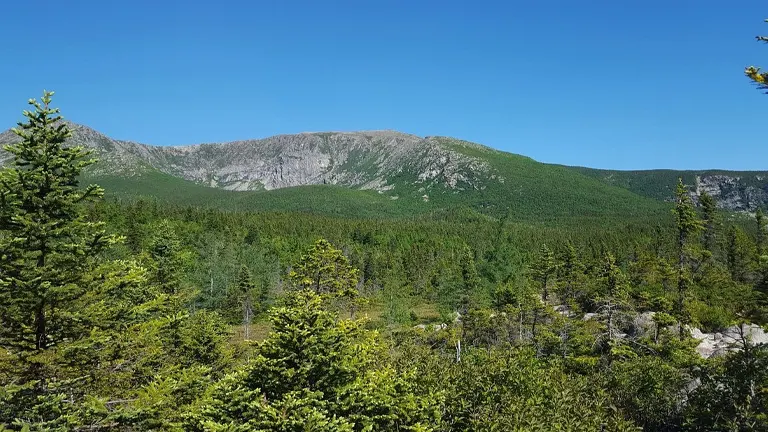
Renowned for its rugged landscape, diverse wildlife, and a plethora of outdoor activities, Baxter State Park offers an escape into a world where nature’s grandeur unfolds in its forests, lakes, and mountains, making it a cherished destination for hikers, campers, and nature enthusiasts alike.
Characterizing Features of Baxter State Park
Baxter State Park, a sprawling 209,644-acre wilderness area in the heart of Maine, is a treasure trove of natural beauty and rugged landscapes. Here are some of its defining features:
- Diverse Water Bodies: The park is interspersed with a network of serene ponds, lakes, and streams, such as Grand Lake Matagamon, Webster Lake, and Nesowadnehunk Lake. These water bodies are vital ecosystems and provide recreational opportunities like fishing and paddling. They also contribute to the park’s scenic beauty, offering tranquil spots for reflection and nature observation.
- Extensive Trail System: Over 215 miles of trails wind through Baxter State Park, catering to all levels of hiking enthusiasts. From leisurely nature walks around Sandy Stream Pond to the rigorous ascent of Katahdin, these trails invite visitors to immerse themselves in the park’s natural splendor. They are not only pathways for exploration but also corridors for observing the park’s diverse ecosystems and wildlife.
- Mount Katahdin: Mount Katahdin, Maine’s highest peak at 5,267 feet, is the centerpiece of Baxter State Park. This iconic mountain is not only a geographical landmark but also holds cultural significance, being named by the Penobscot people. It represents a challenging hike for many adventurers and is the northern terminus of the Appalachian Trail. The mountain’s diverse habitats range from forested slopes to alpine environments, supporting a rich variety of flora and fauna.
- Wildlife Sanctuary: Approximately 75% of Baxter State Park is managed as a wildlife sanctuary. This area is a haven for numerous species, including the moose, black bear, and white-tailed deer. The sanctuary status helps preserve the park’s ecological integrity and ensures that wildlife thrives in a protected and undisturbed environment.
- Scientific Forest Management Area: Covering about 29,537 acres, the Scientific Forest Management Area in the park’s northwest corner reflects Percival P. Baxter’s vision of sustainable forestry. This area serves as a living laboratory for ecological studies and sustainable forest management practices. It’s a testament to the park’s commitment to conservation and responsible resource use.
- No-Hunting Zones: In line with its conservation ethos, Baxter State Park designates about 25% of its area as open to regulated hunting and trapping, with the exception of moose hunting, which is prohibited. These regulations help manage wildlife populations and ensure a balanced ecosystem while providing controlled recreational hunting opportunities.
- Rock Climbing Opportunities: The rugged terrain of Baxter State Park, particularly the weathered granite of Katahdin, attracts rock climbers from all over. Climbing areas like the Chimney Pond are renowned for their challenging routes and breathtaking views. Climbers are required to register and follow park guidelines to preserve the natural landscape and ensure safety.
History of Baxter State Park
The history of Baxter State Park is intimately tied to the vision and efforts of Percival P. Baxter, who served as Maine’s governor from 1921 to 1924. His deep connection with Maine’s wilderness, fostered during childhood fishing and vacationing in the Maine woods, fueled his determination to create a park for the people of Maine. This dream began to take shape in 1930 with his purchase of about 6,000 acres of land, including Katahdin, the state’s highest peak. Over the next three decades, Governor Baxter diligently expanded this wilderness preserve, culminating in a vast area of over 200,000 acres dedicated to the public. His commitment to conservation was underscored in 1931 when he donated the initial parcel to the state, insisting it be kept forever wild.
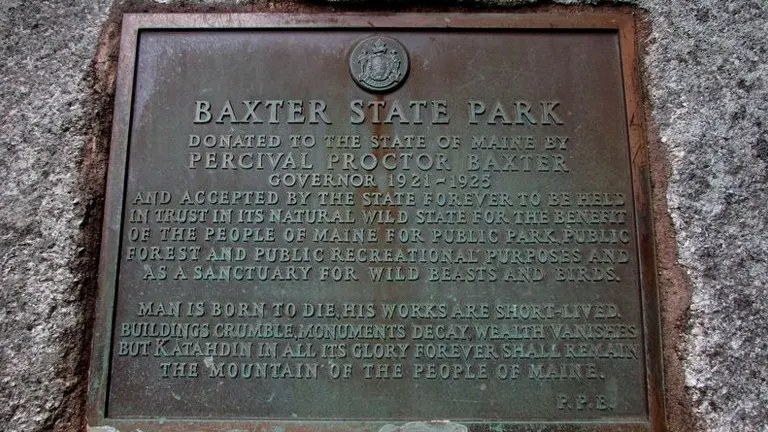
Governor Baxter’s foresight extended beyond land acquisition; he established a trust fund of nearly 7 million dollars to ensure the park’s financial independence and longevity without burdening Maine taxpayers. The park’s governance was uniquely structured, with authority vested in the Commissioner of Maine Inland Fisheries and Wildlife, the Director of the Maine State Forest Service, and the Attorney General. This governance model was designed to preserve the park’s natural state and resources, in line with Baxter’s vision. Today, Baxter State Park stands as a testament to his dedication, a vast wilderness area that continues to inspire and offer solace to nature lovers and outdoor enthusiasts alike, maintaining its pristine condition for future generations.
Unique Ecosystem in Baxter State Park
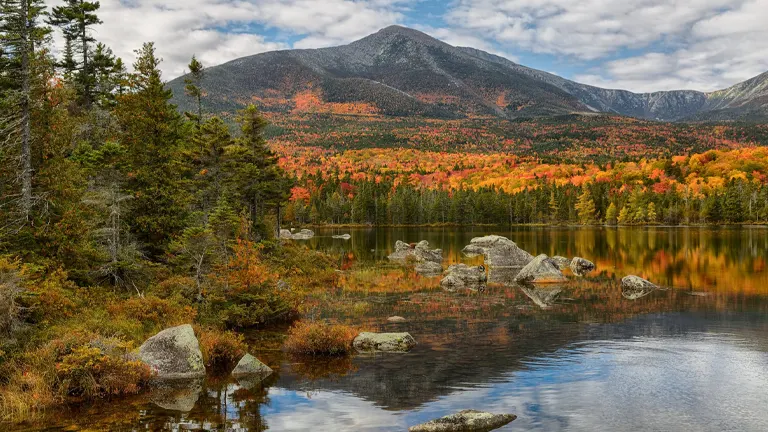
Baxter State Park’s ecosystem is a fascinating blend of northern boreal forests and Acadian forests, hosting a variety of plant and animal species. The presence of both spruce and fir trees alongside birch and maple creates a unique and biodiverse environment. This rich ecological tapestry supports not only a wide range of wildlife but also plays a crucial role in maintaining the natural balance and beauty of the region.
Unique Location of Baxter State Park
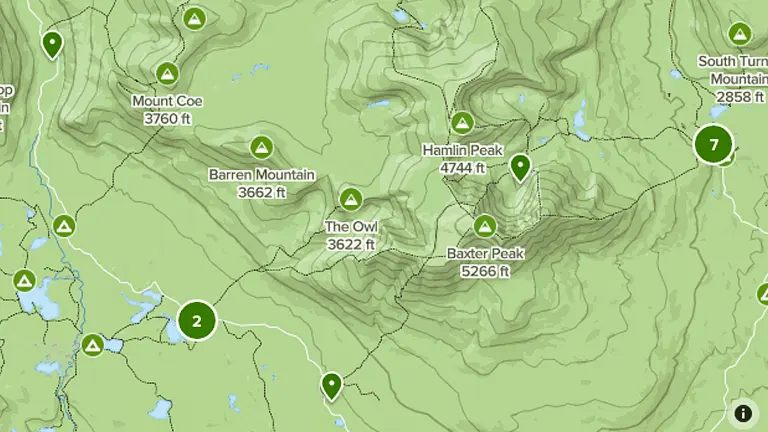
Baxter State Park boasts a unique geographical footprint in north-central Maine, nestled in the heart of the North Maine Woods region. This location places it at a crossroads of various natural realms, making it a crucial part of the Northeast’s larger ecosystem. Its proximity to the Katahdin Woods and Waters National Monument further enhances its ecological significance, offering a contiguous expanse of protected wilderness that is vital for wildlife migration and climate resilience.
The Importance of Conservation and Recreation in Baxter State Park

The park serves as a model for balancing conservation with recreation. Its establishment and ongoing management under the “forever wild” principle by Percival P. Baxter showcase a commitment to preserving natural beauty and biodiversity. Simultaneously, the park offers a multitude of recreational activities, ensuring that its wilderness can be appreciated and enjoyed by people from all walks of life, fostering a deeper connection with nature and an understanding of the importance of conservation.
Diverse Vegetation and Plant Species in Baxter State Park
- Red Spruce (Picea rubens): A dominant tree in Baxter State Park, the red spruce is essential to the park’s forest ecosystem. This coniferous tree provides critical habitat for local wildlife and contributes to the park’s characteristic northern boreal forest landscape.
- Paper Birch (Betula papyrifera): Recognizable by its distinctive white bark, the paper birch is not only a visually striking component of the park’s flora but also plays a crucial role in forest regeneration, especially in areas recovering from disturbances like fires.
- Sugar Maple (Acer saccharum): Famous for its vibrant fall foliage, the sugar maple is a key species in the park’s mixed hardwood forests. It’s vital for biodiversity and also contributes to the park’s aesthetic appeal, especially in autumn.
- Balsam Fir (Abies balsamea): This evergreen tree is a common sight in the park’s higher elevations and wetter areas. Its dense foliage provides shelter for wildlife, and its presence is indicative of the healthy, moist soils found in certain parts of the park.
- Eastern White Pine (Pinus strobus): As Maine’s state tree, the eastern white pine holds a special place in Baxter State Park. This towering tree is not only a historical symbol but also plays a crucial role in supporting various wildlife species and stabilizing the park’s ecosystem.
- Moosewood (Striped Maple, Acer pensylvanicum): Often found in the understory of the park’s forests, moosewood is known for its striped bark and small stature. It’s an important food source for moose and other herbivores, particularly in the harsh winter months.
- Mountain Ash (Sorbus americana): This small tree or shrub, bearing clusters of bright red berries, is a vital food source for birds, especially during winter. Its presence contributes to the park’s biodiversity and offers a splash of color in the predominantly green landscape.
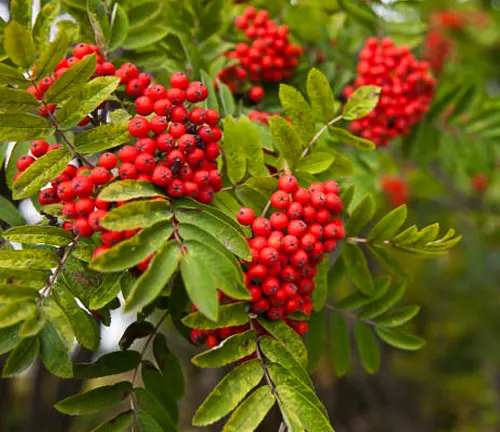
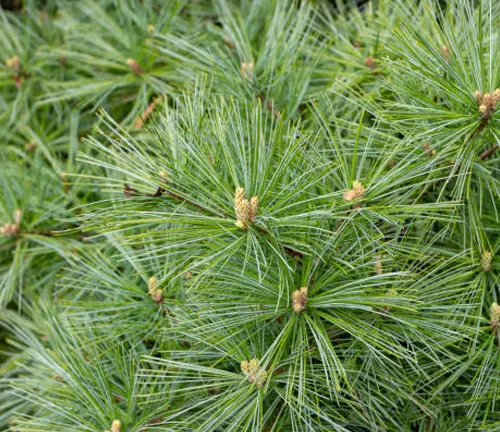
Fauna in Baxter State Park
- Moose (Alces alces): The moose is one of the most iconic species in Baxter State Park, often seen around water bodies. These large mammals are essential to the park’s ecosystem, influencing vegetation patterns and providing a key attraction for wildlife enthusiasts.
- Black Bear (Ursus americanus): The black bear is a common resident of the park’s diverse habitats. As omnivores, they play a crucial role in the ecosystem, from seed dispersal to regulating populations of smaller animals.
- White-Tailed Deer (Odocoileus virginianus): This species is widespread in the park, adapting well to its mixed forest environments. The white-tailed deer is a vital prey species for predators and plays a significant role in shaping plant communities through grazing.
- Lynx (Lynx canadensis): The Canadian lynx, a reclusive and elusive predator, is a testament to the park’s well-preserved wilderness. Their presence indicates a healthy, balanced ecosystem and they primarily prey on snowshoe hares.
- American Marten (Martes americana): This small and agile predator thrives in the park’s dense forests. The American marten is an important indicator of forest health and biodiversity.
- Snowshoe Hare (Lepus americanus): These hares are vital to the park’s food web, serving as prey for various carnivores. Their population cycles significantly influence the predator-prey dynamics within the ecosystem.
- Bald Eagle (Haliaeetus leucocephalus): As a top predator and national symbol, the bald eagle’s presence in Baxter State Park is a sign of the area’s ecological health. They are often spotted near lakes and rivers, hunting for fish.
- Brook Trout (Salvelinus fontinalis): Inhabiting the park’s clean, cold streams and lakes, the brook trout is a popular species among anglers and an indicator of high water quality.
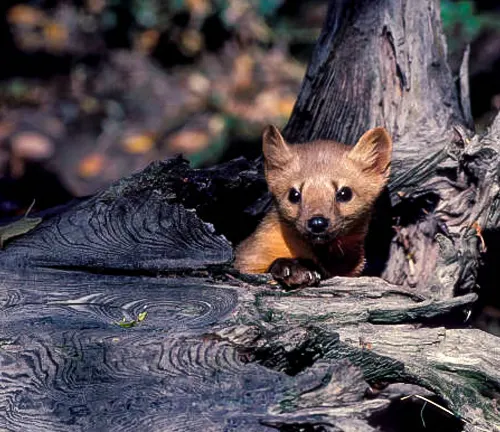
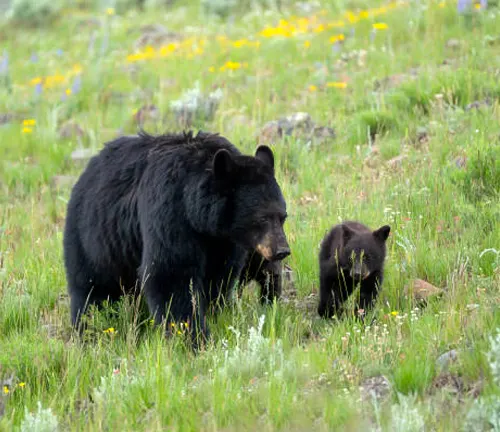
Attractions in Baxter State Park
Mount Katahdin: As the highest peak in Maine, Mount Katahdin is the crown jewel of Baxter State Park. This majestic mountain, reaching 5,267 feet, is not only a challenging hike but also offers breathtaking panoramic views. It’s a significant landmark for hikers as the northern terminus of the Appalachian Trail and attracts climbers seeking a memorable ascent through diverse terrains.


Chimney Pond: Nestled within the park, Chimney Pond is a serene alpine pond, serving as a base camp for those ascending Mount Katahdin. The pond’s crystal-clear waters and surrounding rugged landscape offer a tranquil setting for relaxation and a starting point for various hiking trails, making it a favorite among photographers and nature enthusiasts.
Katahdin Stream Falls: This enchanting waterfall is a highlight for visitors to Baxter State Park. Accessible via a moderate hike, Katahdin Stream Falls cascades beautifully, creating a peaceful and picturesque spot ideal for picnicking, photography, or simply enjoying the soothing sounds of nature.
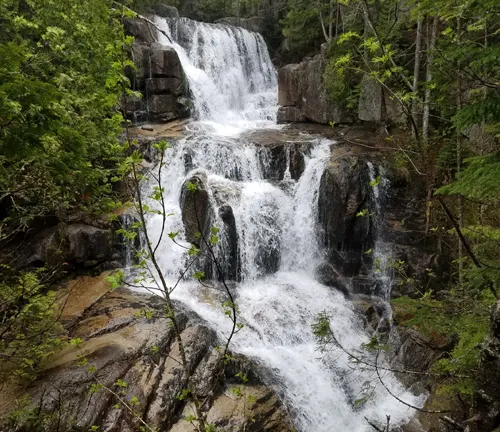
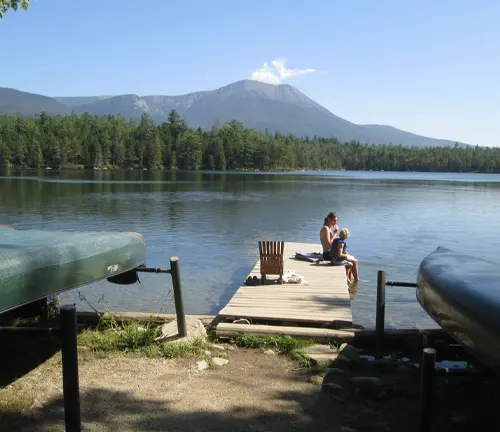
Daicey Pond: Daicey Pond offers a more secluded and intimate experience within the park. With its calm waters and scenic surroundings, it’s a perfect spot for canoeing and kayaking. The pond also has a campground nearby, allowing visitors to wake up to stunning waterfront views.
Sandy Stream Pond: Renowned for wildlife viewing, Sandy Stream Pond is a prime location for spotting moose and other wildlife in their natural habitat. The pond has an accessible boardwalk, providing visitors with a safe and comfortable vantage point to observe and photograph wildlife.

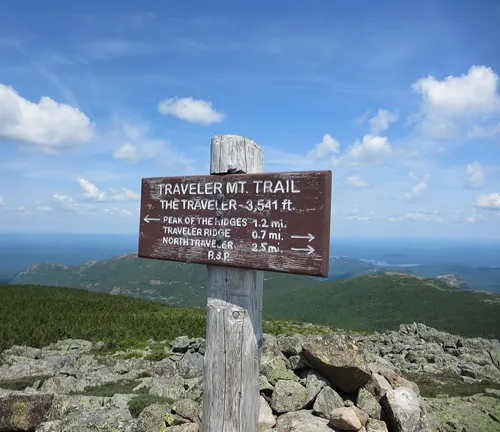
The Traveler Mountain Range: This lesser-known gem in the northern part of the park presents a challenging but rewarding experience for seasoned hikers. The Traveler Mountain Range offers a spectacular loop trail that leads adventurers through diverse ecosystems, showcasing the park’s geological diversity and stunning vistas.
Nesowadnehunk Field Campground: Famous for its beautiful night skies, this campground is a haven for stargazers. Away from city lights, Nesowadnehunk Field offers some of the best opportunities in the park to observe the Milky Way and other celestial wonders, making it a magical experience for astronomy enthusiasts.
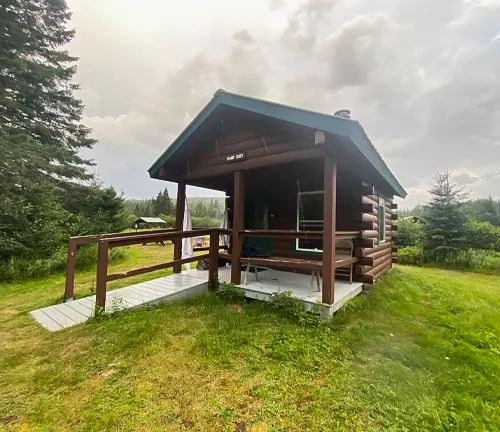
Recreational Activities in Baxter State Park
- Hiking: Baxter State Park is a hiker’s paradise, offering over 215 miles of trails that cater to all skill levels. From leisurely walks along the shores of tranquil ponds to the challenging ascent of Mount Katahdin, hiking in the park is a diverse experience. Trails like the Hunt Trail and the Helon Taylor Trail offer breathtaking views and rugged terrain, attracting both casual walkers and serious backpackers.
- Camping: The park boasts a variety of camping experiences, from developed campgrounds with amenities to remote backcountry sites for a more rugged experience. Campgrounds like Roaring Brook and Katahdin Stream provide a base for exploring nearby trails, while backcountry camping offers a chance to immerse oneself in the wilderness. It’s an opportunity to disconnect from the digital world and reconnect with nature.
- Wildlife Viewing: Baxter State Park is home to a rich array of wildlife, including moose, black bears, and a variety of bird species. Sandy Stream Pond and other wetlands in the park are ideal for moose watching, especially in the early morning or late evening. Birdwatchers can enjoy spotting various species, from songbirds to birds of prey.
- Fishing: Anglers will find plenty of opportunities in the park’s numerous streams, ponds, and lakes. Brook trout, a favorite among fishermen, are abundant in many of the park’s waters. Fishing in Baxter State Park is not only a leisure activity but also a way to connect with the park’s aquatic ecosystems.
- Canoeing and Kayaking: The park’s numerous water bodies, including Daicey Pond and Nesowadnehunk Lake, offer serene settings for canoeing and kayaking. Paddling in the park allows visitors to explore remote areas inaccessible by foot and to enjoy the tranquility of the park’s waters, often accompanied by stunning views of the surrounding mountains.
- Rock Climbing: For the adventurous, Baxter State Park offers rock climbing opportunities, particularly around Mount Katahdin and the Traveler Mountain Range. The park’s rugged terrain and granite cliffs, such as those near Chimney Pond, provide challenging routes for experienced climbers.
- Photography and Art: With its stunning landscapes and rich wildlife, Baxter State Park is a haven for photographers and artists. The changing seasons, diverse flora and fauna, and majestic vistas provide endless inspiration for capturing the beauty of Maine’s wilderness.
- Winter Sports: In winter, the park transforms into a snowy wonderland, offering activities like snowshoeing and cross-country skiing. The snow-covered trails and frozen lakes provide a unique perspective of the park’s beauty, making it a year-round destination for outdoor enthusiasts.
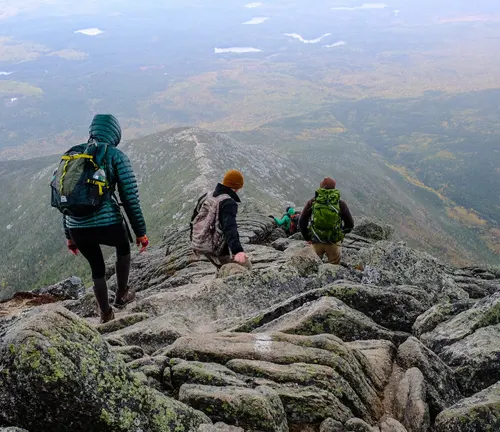

Different Facilities and Amenities in Baxter State Park
- Campgrounds: Baxter State Park offers a variety of campgrounds, each with its unique character. From developed sites like Katahdin Stream Campground, ideal for families and less experienced campers, to more remote and rustic options like Russell Pond Campground deep in the wilderness, the park caters to a range of camping experiences. Facilities at these campgrounds typically include picnic tables, fire rings, and nearby hiking trails, though amenities vary by location.
- Backcountry Camping Site: For those seeking a more secluded experience, the park’s backcountry campsites are accessible only by trail or waterway. These sites offer a true wilderness experience, encouraging a deeper connection with nature. They are minimally developed, emphasizing low-impact camping and are ideal for experienced wilderness enthusiasts.
- Day-Use Areas: The park provides several day-use areas, perfect for picnics, short hikes, or just enjoying the scenery. These areas, like Roaring Brook and Abol, have parking facilities, picnic tables, and easy access to trails, making them convenient spots for families and day visitors to enjoy the park’s natural beauty without venturing too far into the wilderness.
- Visitor Centers and Ranger Stations: Visitor centers and ranger stations are integral to the park experience. These facilities offer information, educational displays about the park’s ecology and history, and sometimes sell basic supplies. Rangers at these stations can provide invaluable advice on trail conditions, weather forecasts, and wilderness safety.
- Rental Equipment: For convenience, the park offers rental equipment at certain locations, including canoes and kayaks at pondside campgrounds. This service allows visitors to enjoy water-based activities without the need to bring their own equipment, making paddling adventures more accessible to all.
- Trailheads and Parking: Well-maintained trailheads and parking areas are available throughout the park, providing access to its extensive trail network. These trailheads often have informational kiosks with maps and brochures, helping visitors plan their hikes and explore the park safely and enjoyably.
Tips and Advice for Visiting Baxter State Park
- Plan and Reserve in Advance: Given the popularity of Baxter State Park, especially during peak seasons, it’s crucial to plan your trip well in advance. This includes reserving campsites, which can be booked up months ahead. Early planning also allows you to research the trails or areas of the park you wish to explore and ensures you have the necessary permits, if required.
- Prepare for Changing Weather: The weather in Baxter State Park can be unpredictable, changing rapidly especially in the higher elevations like Mount Katahdin. Visitors should be prepared with appropriate clothing and gear for varying conditions, including rain gear and layers for cold weather. Always check the weather forecast before your trip and be prepared for unexpected changes.
- Pack Essentials and Leave No Trace: Essential packing includes adequate food, water, and safety gear. The park operates on a carry-in, carry-out policy to preserve its natural beauty, so visitors should be prepared to take all their trash with them. Additionally, familiarize yourself with the Leave No Trace principles to minimize your impact on the environment during your visit.
- Respect Wildlife and Habitat: Baxter State Park is home to a diverse range of wildlife. It’s important to observe animals from a safe distance and not to feed them. This respect for wildlife helps in preserving the natural habitat and ensures safety for both visitors and animals.
- Stay on Marked Trails: To protect the park’s delicate ecosystems and for your safety, always stay on marked trails. Venturing off-trail can lead to erosion and other environmental impacts and can also increase the risk of getting lost.
- Be Prepared for Limited Connectivity: The park offers a chance to disconnect, as cell phone reception is limited and there’s no Wi-Fi. Prepare to be off-grid during your stay and inform someone of your plans before you enter the park.
- Adhere to Park Regulations: Familiarize yourself with and adhere to the park’s regulations, including campfire rules, fishing regulations, and pet policies. These regulations are in place to protect both the park’s natural resources and its visitors.
- Be Mindful of Park’s Carrying Capacity: The park has a limited carrying capacity to preserve its wilderness character. Visitors are encouraged to be mindful of their impact on trails, campsites, and other facilities. This includes arriving early during peak times to secure parking and avoiding overcrowding in popular areas.
Recommendation
If you’re seeking an escape into the heart of nature, Baxter State Park is a destination that should be at the top of your list. This stunning wilderness area, with its majestic Mount Katahdin, serene ponds, and diverse wildlife, offers an unparalleled outdoor experience. Whether you’re an avid hiker, a wildlife enthusiast, or simply someone who cherishes tranquility, the park’s vast landscapes and unspoiled beauty provide the perfect backdrop for adventure and relaxation. So pack your bags, embrace the call of the wild, and prepare to be mesmerized by the natural splendor of Baxter State Park – a true gem that promises to rejuvenate your spirit and connect you to the wonders of the natural world.
Conclusion
Baxter State Park is a true treasure of natural beauty, offering a blend of adventure and tranquility. Its commitment to preserving wilderness provides an invaluable escape to nature enthusiasts. The park’s majestic landscapes and diverse wildlife continue to inspire and remind us of the importance of conserving natural spaces for future generations.
FAQs
- What is the best time of year to visit Baxter State Park?
The best time to visit is late spring through early fall. Summer offers warm weather and full access to trails and campgrounds, while fall provides stunning foliage. Winters are harsh but beautiful for experienced winter hikers and campers. - Can I see the Northern Lights from Baxter State Park?
Yes, it’s possible to see the Northern Lights, especially during high solar activity. The park’s low light pollution makes it a favorable spot, but sightings are never guaranteed and are more likely in late fall to early spring. - Are there guided tours available in the park?
Baxter State Park does not typically offer guided tours, as it’s a wilderness park. Visitors are encouraged to explore independently or with their own hired guides. However, the park rangers can provide valuable information and advice. - What wildlife might I see in Baxter State Park?
You can see a variety of wildlife, including moose, black bears, white-tailed deer, lynx, and numerous bird species. Early morning and dusk are the best times for wildlife viewing, especially near ponds and streams. - Is Baxter State Park suitable for beginner hikers?
Yes, there are trails for all skill levels, including beginners. Shorter and less challenging trails, like those around Daicey and Kidney Ponds, are perfect for novices or families. - Are dogs allowed in Baxter State Park?
No, pets are not allowed in the park to protect wildlife and the natural environment, as well as for the safety of both pets and visitors. - Can I camp anywhere in Baxter State Park?
Camping is only allowed in designated campgrounds and backcountry sites. Reservations are often necessary, especially during the summer months, and backcountry camping requires a permit. - Is there a fee to enter Baxter State Park?
There is no entrance fee to enter Baxter State Park. However, there are fees for camping and certain other activities, like reserving shelters or cabins.
As we conclude our exploration of Baxter State Park, it’s clear that this remarkable wilderness area is not just a destination, but a journey into the wild heart of Maine. With its majestic peaks, serene waterways, and unspoiled landscapes, Baxter State Park offers a unique opportunity to connect with nature in its purest form. Whether you’re seeking adventure or tranquility, this park is a place where memories are made, spirits are lifted, and the natural world reigns supreme.


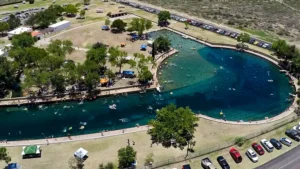
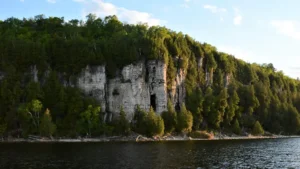
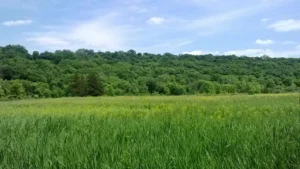

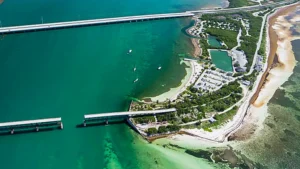
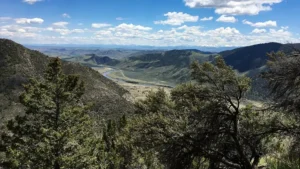
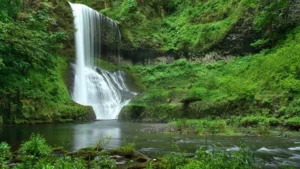
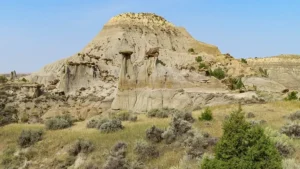
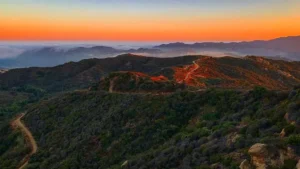
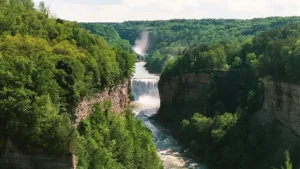
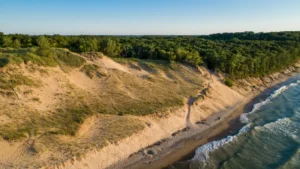

What a fantastic article about all the wonders of BSP! Just one minor thing -- entering the Park is free for Maine residents only. Non-residents pay a $16 entrance fee at the gate to help support Park operations (unless they are hiking in). Happy trails!
Cassandra
January 30, 2024 2:43 pm